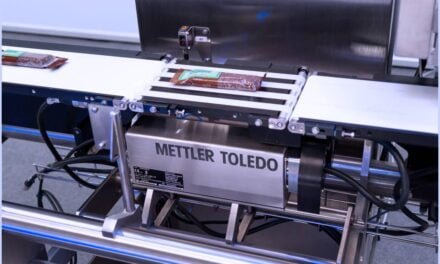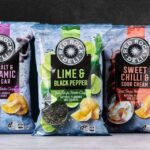Indian confectionery industry is going through rapid changes in terms of trends and consumer behaviour pattern. During their research, Tanweer Alam and Nitya Sharma, found that emerging trend of gifting confectionery products and untapped rural market are among the key factors that are expected to fuel growth in the Indian confectionery market in the near future.
Trends in Confectionery Industry
Confectionery items are generally used for taste and small hunger but the people or children should consume confectionery items in optimum quality because its excessive use can harm body like any other sweet and it should use as a snack in little quantity.
As per a report by ‘Research and Markets‘ The India Confectionery market has been recording a CAGR of 12.15% since 2010. The Snack Bars category has shown the highest growth since 2010 with a CAGR of 19.07%, and surpassed volume consumption of 4.845 million kg in 2018. The Boiled Sweets segment is expected to dominate the Gum sales during the forecast period. Supermarkets and Hypermarkets remain an important distribution channel for the Confectionery sales.
There are various types of confectionery items are available in the market. For research purpose, we are taking here mainly five types of confectionery items i.e. candies, wafers, chips, chewing gum and chocolates. All of these five products are very much popular in our country.
Some leading industries in the field of confectionery products are Cadbury, Nestlé, Parle and Amul. Enhancing the base of the customer of children in the age group of 5 to 12 years, the industry observed a healthy competition between foreign market players like Cadbury, Nestlé and Indian players like Parle, Nutrine and D.S. Group with the need to grow in the expenditure of advertisement confectionery industry observed a decline in the share of non-branded products.
There are different types of confectionary products and all look equally good in first instance. Knowing about the liking for various confectionary products wafers, Chewing gums, Chocolates, Chips, Candies.
The Global Trends of Confectionery Market
The global sugar confectionery market has witnessed steady growth in the last two decades. A wide range of innovative sugar confectionery items is appealing to consumers as sweet treats and novel tastes. The onset of new flavours continues to attract new consumers and confectionery enthusiasts. Numerous market players involved in the sugar confectionery industry have resolved to new marketing strategies, developing unique flavours and innovations to expand their business.
For more on how health trends are shaping food products, visit: Rising Consumer Shift: Food Sustainability Takes Center Stage.
The use of non-traditional ingredients such as fruits, spices, and dry fruits has increased in the last decade as part of product innovation of multiple manufacturers.. A current trend that has been observed is the reduction of sugar content in confectionery products worldwide owing to the rising incidences of diabetes and obesity.
Manufacturers Reducing Sugar Content in Products
In the current scenario, the general awareness related to health and ingredients used in sugar confectionery has grown. The rising incidences of diabetes and obesity have made customers more aware and health-conscious. The need to regulate the sugar content in confectionery – especially in sugar confectionery – is pushing manufacturers to keep a tab on the content of sugar used in a product. Leading manufacturers operating in the sugar confectionery market are shifting their focus towards developing products that are sugar-free or contain less amount of sugar compared to conventional sweets and confectionary.
Earlier this year Nestle announced that that the company will reduce the content of sugar by 10% in chocolates and sweets in the UK and Ireland by 2018. The company made this decision based on health issues and to attract consumers that are health oriented. It is forecasted that the move will reduce the quantity of sugar used by 7500 tons. Moreover, a sugar tax that is in the pipeline is urging manufacturers to manufacture healthier products. The company reveals that it uses higher quantities of the current ingredients to reduce the sugar content and will not resort to using artificial sweeteners.
This shift aligns with global health-conscious trends. Learn more about sugar alternatives here: Research Shows Strong Demand for Naturally Derived Sugar Alternatives.
A company spokesperson said that the 10% reduction in the sugar content will not be a direct swap of sugar for other ingredients. The company is still researching methods and techniques that will not affect the taste of the products. The overall objective is to reduce the sugar content without hindering the taste of several products manufactured by the company. In recent years, Nestle has made heavy investments in research to reduce the sugar content without affecting the taste. Recently, the company claimed to have found a solution to do so in which sugar levels are cut by as much as 40 percent.
Status of Indian Confectionery Industry
Confectionery is the general term applied to various varieties of sweets and chocolates. In 1950’s confectionery industries was an unorganized market and added negligible to the growth of the economy. The confectionery industry of India, which was ranked 25th in the world in 2009, has now emerged as one of the largest and well-developed food processing sectors of the country. The credit goes to liberalization along with the growing Indian economy, which has led several multinational companies to invest in Indian confectionery market, further changing the face of this industry.
The Indian confectionery market was valued at approximately INR 24,000 crore (INR 240 billion) in 2023, having demonstrated steady growth over the past decade. According to industry reports, the market has been growing at a CAGR of around 10-12% between 2018 and 2023. Looking ahead, the Indian confectionery market is projected to grow at a CAGR of 8-10% from 2024 to 2029, driven by rising disposable incomes, urbanisation, and increasing demand for innovative and premium products.
For a deeper look at India’s top food companies, see: Top 20 Indian Food & Beverage Companies in 2025.
Future Potentials for the Growth of Indian Confectionery Industry
Of the total market, sugar confectionery holds a market share of around 46% and the rest by chocolate and gum confectionery segments. Owing to lower unit price than chocolate confectioneries, sugar confectionery segment has registered higher volume sales over the recent years. Traditionally, small domestic players catering largely to a regional market accounted for a major share of the sugar confectionery market.
However, in recent years, multinational players, too, have entered this market and have introduced quality products. Chocolate consumption is mainly centered on semi-urban and urban areas due to foreign exposure, rising disposable income and consumers’ impulse buying. Players have identified age-specific niche market segments within the chocolate confectionery market and are undertaking intense advertising campaign to ensure effective brand communication and positioning.
Indian confectionery market is going through rapid changes in terms of trends and consumer behaviour pattern. The industry is being benefitted from the country’s economic boom and growth in consumer spending. This higher consumer spending is also driven by the newfound mall culture and changing lifestyle.
Besides, the entry of various multinational companies in the Indian market has not only increased the competition but also the per-capita consumption, by launching new products at affordable prices and creating awareness among the buyers through advertisements and promotional campaigns. During the research, we found that the emerging trend of gifting confectionery products and untapped rural market are among the key factors that are expected to fuel growth in the Indian confectionery market in the near future.
Backed by these factors, the Confectionary sector in India is well consolidated with top players holding a major share of the market; local subsidiaries of global confectioners are among the leading players in India. Large players have a significant presence in chocolate confectionery market while smaller players primarily operate at a regional level and have a sizeable base in the sugar-based confectionery market.
The confectionary market in India has a well-entrenched presence of multinational players such as Mondelez (formerly Cadbury India), Nestle, Perfetti Van Melle, Mars India and Lotte as well as large domestic players such as Amul, Parle, ITC, Ravalgon and Candico. Multinational companies such as Ferrerro, Hersheys and Lindt have a strong presence in the premium chocolate market. In the chocolate confectionery segment, Cadbury holds a market share of around 65-70%, followed by Nestle at around 20%.
For insights into how branding impacts food markets, explore: Power of Branding: 5 Successful Food and Beverage Rebranding Stories.
Classification of Confectionery Products in India
The confectionery products of India are divided into three segments: chocolate, sugar confectionery and gum, which is further divided into sub-segments. Among all the sub-segments of Indian confectionery products, chewing gum market is expected to grow at the fastest rate, by value, in the coming years. Confectionery in India has broadly classified as chocolate-based confectionery, sugar-based confectionery and gum-based confectionery. The categories are further classified as follows:
- Chocolate confectionery: Molded, count segment, panned chocolate, eclairs, premium chocolates
- Sugar confectionery: Hardboiled candies toffees, gum-based confectionery, mints and lozenges
- Gum-based confectionery: Chewing gums, bubble gums
The entire sugar confectionery products can be divided into seven major categories, viz. hard-boiled candies (HBCs), toffees, eclairs, chewing gum, bubble gum, mints and lozenges. Confectionery is hygroscopic in nature and requires protection against the ingress of moisture and exposure to high temperature (as far as possible). A candy or confectionery product may be adversely affected by many things. Hard candy, brittles and crunch products are most sensitive to moisture and absorb water vapour fairly rapidly from the atmosphere. Various gums are less sensitive, while some creams tend to lose moisture considerably.
Based on the Types of Confectionery pH Acidity
In confectionery, it is probably best described as active acidity. The pH range covers acidity and alkalinity, although rarely are alkaline conditions met in confectionery. Alkalized cocoa is an exception and possible also aerated products using sodium bicarbonate- these are slightly alkaline in confectionery, weak acids such as citric and tartaric acids are used for flavourings. Strong acids, for example, hydrochloric acids are used for special purpose such as sugar inversion. There is a relation between pH and concentration, for example, pH 2 citric acid must have a concentration of 2.4% whereas HCl has 0.03%. The taste factor depends on to some extent on the type of confection product.
Acidity is a second of the natural taste stimulations experienced when eating confectionery. Citric acid, lactic acid, and tartaric acid for creating and acids sensations in sweets. Their effect on taste sensation is related to pH value acidity. Their use in the food industry has secondary benefits of preservation and resistance to microorganisms.
| Also Read: How to Optimize Bakery and Confectionery Packaging?
| Also Read: Journey of Food Packaging Systems in India
Class of Confectionery Products based on ERH of Confectionery Items
ERH is known as equilibrium relative humidity. Water activity is expressed as a unit whereas ERH is expressed as %. ERH is inversely proportion to the components in solution when expressed as a molecular concentration in the syrup. An increase in the molecular concentration in varies phases will lower the ERH value. Whereas humectants can be used to minimize the rate of moisture change while a product is being held on the store. These include sorbitol, glycerol and various glucose syrups.
Other Confectionery Products
Chocolate coatings, compound coatings, and lozenge paste are related to the hygroscopicity of the ingredients. The moisture content of all these products is low, 1% or less. The main ingredients are probably milk solids, sugars and cocoa material, with very small amounts of glucose syrup or invert fat also present, which is moisture-free—dark chocolates 85% and milk chocolates 78% relative humidity.
The ERH of low moisture substances, including powders, depends on the absorption properties of the constituents and the actual moisture content. In confectionery, the total solids mainly depend on the sugar content. T.S. of boiled sweets is 83%, whereas fudge is 75%. TSS of jam 65-68%, jelly 65%, preserve 70%, candy 75%. Based on sugar content, the confectionery of many types, the products are by sugar, whether crystallized or not:
- Boiled sweets
- Caramel, toffee and fudge
- Gums and jellies
- Liquorice paste, cream paste and aerated confectionery
- Tablets, lozenges and sugar panning medicated confectionery and chewing gum
- Centers, fondants, marzipan and crystallised confectionery
Product Innovations in Confectionery Industry
Product innovation plays a vital role in establishing a strong market presence. In the current scenario, customers are seeking products that are innovative and non-conventional. In the modern era, the ageing population is also open to consuming new products that are non-conventional. The taste, texture, and appearance of several products are continuously modified to attract new customers.
In March 2017, Cargill introduced a new texturizing solution that will aid the confectionary manufacturers in Europe to get an optimal texture and transparency. The solution will reduce the drying time by 50% when it involves gelatin-free wine gum applications. The product, C*Clearset 35426, is a blend of speciality starches used for gelatin-free sugar confectionery applications. The new product will facilitate the potential of designing nutritious and tasty food products to satisfy consumers.
For more on food innovation, see: Top 5 Food & Nutrition Technology Watchlist for 2025.
According to Laura Goodbrand (2013) texture plays an important role when it comes to taste perception. In the European region, the number of product launches that have a texture-centric claim has doubled in the last five years, especially in gummy and jelly products.
The global sugar confectionery market is set to show significant growth. The demand for unique and innovative products has boosted the prospects of the industry. General awareness related to health and diet has increased over the years, urging manufacturers to create healthy products. The demand for sugar confectionery is higher in developed regions such as North America and Europe; however, as the overall economy of Asia-Pacific is growing, it is creating an added demand for sugar confectionery.
In addition to the measures taken by Nestle, other prominent brands are turning their focus towards reducing the quantities of sugar in their products. Renowned sports drinks, Lucozade, Orangina, and Ribena, have also expressed interest to reduce sugar levels by 50% before 2018.
For the latest on food industry transformations, visit: How Sustainability is Revolutionizing the Food Industry.
The first author is Director at Indian Institute of Packaging, while the second author is a research scholar at Banaras Hindu University, Varanasi. | Photo by Freepik

















